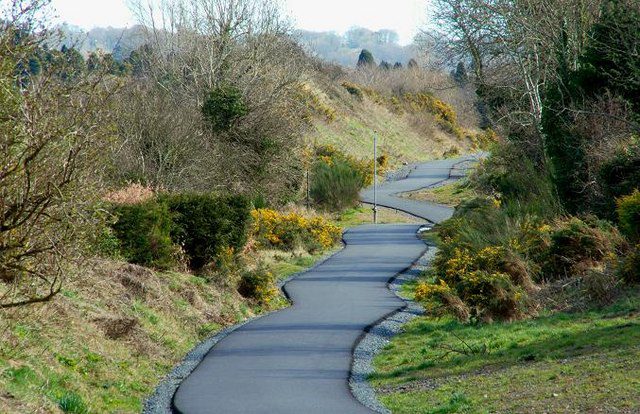The potential need for compulsory purchase orders (CPOs) to facilitate the Galway section of the Dublin to Galway Greenway cannot be ruled out, according to the Ministers with responsibility for the greenway.
The Minister for Transport, Tourism and Sport, Shane Ross, and Minister of State for Tourism, Patrick O’Donovan indicated the potential need for CPOs when they met a Galway delegation on the issue recently.
The brakes were put on work on the Galway section of the greenway last year after landowners objected to the route cutting through their lands.
In a statement a spokesperson for the Department of Tourism said that in the Ministers recent meeting with the deputation from Galway, the importance of consultation with stakeholders, particularly landowners, was stressed by both sides.
The Ministers indicated that in designing potential routes, all options need to be considered and that the potential need for CPO could not be ruled out.
“The Minister [Shane Ross] indicated that the Department was in the process of developing a new Strategy for the future development of greenways/cycleways and that the appropriate approach to be taken by authorities and agencies tasked with delivering greenway infrastructure where engagement and consultation with landowners is required would be considered in that context.
“A public consultation process on the development of the Strategy will be launched in the near future and all stakeholders will have an opportunity to give their views as part of that process.”
Alternative Greenway Route Proposal
Meanwhile, a proposed new greenway route for the Athlone to Galway section has been welcomed by Galway IFA.
The proposal is the brainchild of Martin Lavelle, a former senior roads engineer with Galway County Council.
Lavelle said that Minister Ross has seen the proposal, as well as the Minister O’Donovan and Minister of State for the Office of Public Works, Sean Canney.
He said that farmers are the major players in this and that maybe rural Ireland could get a ‘leg up’ from the proposed route.
“Agreement with landowners is paramount. Threats of compulsory purchase orders (CPOs) shouldn’t be part of any discussions.”
There has to be a meeting with all the stakeholders. It focusses on landowners and communities in a bottom-up approach.
“I’ve tried to maximise what we’ve got [in Galway] with this proposal. The other route ignores some of the cultural and ecclesiastical heritage of the county.”
“The proposed cannot be a route for a route’s sake. It is not a route alone, it is fundamentally about rural and tourism development through a Clar deprived area of Galway. It has to tell a story.”
The EU estimates that cycling tourism in 2009 was €54 billion per annum across Europe.
“It will involve grants to local communities to rehabilitate the old historic buildings, which will involve employment. These rehabilitated buildings become craft innovation hubs for small industries.”
In essence it means rural employment in a deprived area and complies with the objectives of the Rural Ireland Action Plan.
In the proposal, Lavelle said that the route is longer than the original but should have less landowners affected as vast sections of the land on the route are in public ownership of Bord na Mona, Coillte, OPW and Iarnrod Eireann.
The proposed route runs south along the River Shannon to Ferbane Bog, along the Bord na Mona railway line and passes the Clonmacnoise World Heritage Site.
It continues on the railway track across the Shannon at Shannonbridge with a cantilevered greenway bridge off the existing Bord na Mona bridge and continues on to Clonfert and Clontuskert Abbeys.
It then moves through other areas of historic appeal, including Ballinasloe, Kilconnell, Woodlawn, Athenry, Monivea Coillte woodland, Lackagh, Claregalway and Galway city.
Other links off the greenway could connect it to Portumna and into Munster while to the north there would be a possibility to connect it to towns and villages in Mayo and Roscommon.
Speaking to Agriland Galway County Chairman, Pat Murphy, said that the IFA was not involved in any of the planning of the proposal but members of the Galway executive have seen the report.
“It’s a good body of work. It’s a pity that it wasn’t done three or four years ago.
“There’s an alternative route there now, the job now is to get the County Council to go ahead with it. It will be down to the County Council and the people [through public consultation] to choose the best route.
“Our job is to make sure that there’s no CPOs used and that farmers are properly consulted with on the Greenway.”
